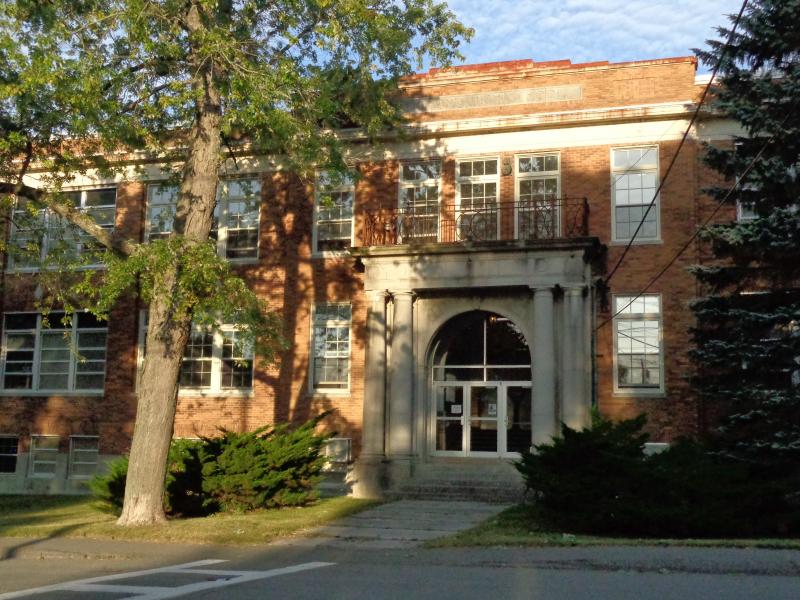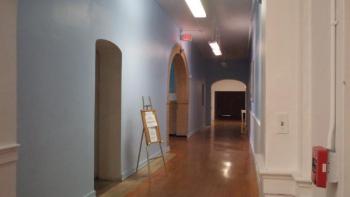ROCKLAND — Altering the conditional use clause of a building in Rockland would benefit the city as a whole, according to a tenant of the Lincoln Street Center for the Arts.
Artists in Residency, within the The Lincoln Street Center for the Arts, are usually locals, due to the fact that their studios within the former high school do not have kitchens or showers.
Their funding group, The Ellis Beauregard Foundation, wants permission to add a full kitchen and bathroom to its cluster of four studio units in order to create a dormitory-style living environment.
The property owner is amenable to the change, according to Donna McNeil, executive director of the Ellis Beauregard Foundation.
First, though, the phrase “live/work” needs to be added to Ordinance: Residential Zone A Conditional Uses, which covers culture and education zoning for former school buildings in Rockland, i.e., Lincoln Street Center for the Arts.
The former school currently has 22 studios, with the Foundation renting one wing for $32,000 per year.
According to the foundation’s website: Every six months four Maine artists are selected through a competitive process to be awarded a large studio in the Lincoln Street Center, Rockland and a $1000 a month stipend for the entire six months. They also receive studio visits from art professionals during their residency.
To fill their six-month residency programs, they choose four artists annually from a pool of 50. Each artist is then provided with the monthly stipend to help keep them from holding a part-time job or worrying about finances.
In return, the artists commit to interacting with the community, as one artist did by painting a mural on a wall of Hamilton Marine.
With the added amenities, the program, which juries applicants on artistic excellence by museum and curatorial professionals, could expand and bring in artists from all over Maine, and beyond, McNeil said.
Rockland City Councilors learned of the Foundation’s request through McNeil’s presentation during the Monday, Feb. 4, City Council agenda-setting meeting, but decided to add discussion about the ordinance amendment to the March agenda instead of February.
The extra few weeks will allow the city attorney time to review the language, as well as allow a design professional to look for issues of code compliance.
Though the building is established for cultural and educational purposes, it also still holds an unused permitted-use clause as an assisted living establishment with up to 30 units.
“That was when it was going to be saved by a developer who had a stake in it,” said Rockland Code Enforcement Officer John Root.
The proposed ordinance amendment is as follows:
ORDINANCE AMENDMENT Residential Zone A Conditional Uses
Former public school buildings, discontinued and used for 1) cultural and educational purposes, which may include combined living/working spaces related to said cultural and educational purposes; 2) public access or local governmental affairs television studios and local non-profit community radio stations and studios broadcasting at no more than 100 watts horizontal radiated power, provided that broadcasting equipment, if any, shall be either remote or via one roof-mounted whip antenna not exceeding 35 feet in height, and provided that the total height of the discontinued school building and roof-mounted antenna does not exceed the total height limit set forth in Section 19 313(4); and/or 3) elderly assisted living housing of no more than 30 units.
The above-referenced uses are permissible with the approval of the Planning Board under the provisions of the Site Plan Review Ordinance (Chapter 16, Article II), regardless of whether or not a structure is involved. In granting, denying, and/or imposing conditions, the Planning Board shall undertake a review applying the process and standards outlined in Chapter 16, Sections 16-201 through 16-206 for site plan review and shall take into consideration the following factors: location, character and natural features of the site and adjoining property; fencing and screening; landscaping, topography and natural drainage; traffic hazards, vehicular access, circulation and parking; pedestrian circulation; sign, and lighting; compatibility with existing uses; availability of necessary public services; compliance with applicable requirements of all City ordinances
Reach Sarah Thompson at news@penbaypilot.com


























